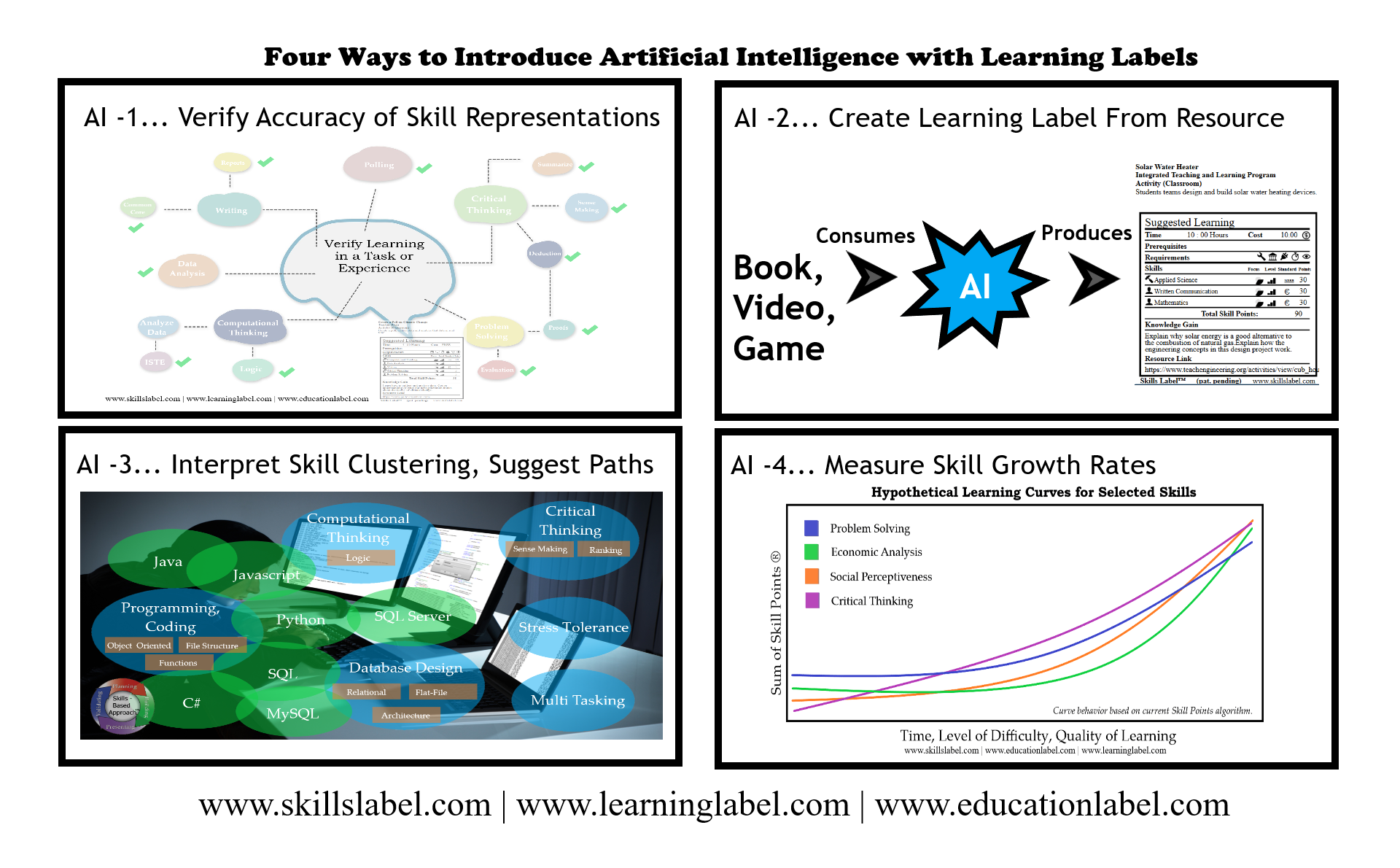Awhile back (2016), I thought of how artificial intelligence (“AI”) could be used in the learning labels technology (but admit I could not explain how AI works). Two main themes of a recent PBS documentary on the influence of AI are: every technology company must consider AI; and it could displace up to forty-five percent of blue- and white-collar jobs. (I mention the latter because a lot of my work is preparing a workforce with skills.) So, I took a course by IBM to better understand the mechanics of AI to communicate how AI could work with the learning labels system my team is working on.
Integration one: verifying the accuracy of skill representations and determining focus values from a learning label. Provide a system with a learning label (structured data) defining the expectations for a learning resource (a book, video, or game) and the resource itself (unstructured data). Create an algorithm that checks each time skills on the label are applied (frequency) and its intensity from the system consuming the resource. For books or videos, this might involve a natural language processor to understand the context of a single body of work. How do we understand applied skills and their intensity from context and questions asked during or at the end of a task or assignment in a book? Or similarly in the transcript of a video? Can we measure thinking, teamwork, and technical skills in segments of a game?
Integration two: creating a learning label by reading or consuming a resource. Building on the first integration, get the system to learn the algorithm to determine skills and their focus values. Provide a system with the resource and get the system to produce a learning label. Can a system learn an algorithm to interpret skills and these properties in this way?
Integration three: understand how skills ‘cluster together’ to create alternative learning pathways. A learning label is largely designed in skills and related properties (focus and difficulty levels). When there are enough labels in place, take what is represented to understand how skills cluster together. Create an algorithm to suggest effective learning pathways and next tasks in a series. Can we create pathways to pivot between education and jobs?
Integration four: measure skill growth rates on a skill by skill basis. Skill Points® 2.0 is a next generation learning measurement. Again, with learning labels, provide a system with verified learning labels and other variables to determine a growth rate. Essentially, measure how a machine learns skills by consuming learning resources through time. Use the coefficients within the Skill Points® algorithm.
